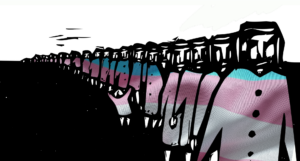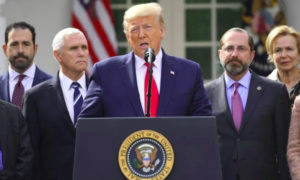Conceived in Iniquity
Los Angeles is the Great Gatsby of American cities, and a new book confirms this through the lives of three early, self-invented Angelenos. Penguin Random House
Penguin Random House
 “The Mirage Factory: Illusion, Imagination, and the Invention of Modern Los Angeles”
“The Mirage Factory: Illusion, Imagination, and the Invention of Modern Los Angeles”
A book by Gary Krist
For a relatively young metropolis, Los Angeles has generated many fine histories. Starting from markedly different political positions, Carey McWilliams, who wrote “Southern California: an Island on the Land,” and Kevin Starr, author of the monumental “Americans and the California Dream” series, did as much as anyone to map that terrain, and more recent efforts have extended, refined and challenged their accounts. Today’s popular historians are more likely to rely on selection and emphasis to capture the city’s distinctive character. Their challenge is more literary than historical: Which part of the Los Angeles story can stand for the whole?
In “The Mirage Factory: Illusion, Imagination, and the Invention of Modern Los Angeles,” Gary Krist answers that question with a trio of loosely connected narratives from the early 20th century. His protagonists are William Mulholland, who engineered the Los Angeles Aqueduct; D.W. Griffith, the pre-eminent American film director of early Hollywood; and Aimee Semple McPherson, whose media-savvy evangelism flourished in a city dominated by Midwestern transplants.
All three figures demonstrate Starr’s claim that Los Angeles was the Great Gatsby of American cities. By inventing themselves, Krist implies, the trio was also inventing modern Los Angeles. If other cities were indifferent to the drums of their destiny, Los Angeles heard those rhythms and added a melody. But Krist’s subtitle also suggests that the trio’s illusions—not only the ones they created, but also the ones they labored under—were formative.
Click here to read long excerpts from “The Mirage Factory” at Google Books.
Born in 1855, Mulholland was the oldest of the three. After emigrating from Ireland, he caught on as a ditch-tender with the privately owned Los Angeles Water Co. There he met Frederick Eaton, the company’s superintendent, before advancing to that position himself in 1886. Raised in a prominent Pasadena family, Eaton became the city surveyor and engineer before serving as mayor. Later, he helped a Los Angeles business syndicate relieve Owens Valley farmers of their water rights. Mulholland then constructed the Los Angeles Aqueduct to channel that water to the San Fernando Valley, which had not yet been annexed by Los Angeles.
Even as it doomed the Owens Valley farming economy, the syndicate quietly purchased 108,000 acres of previously unirrigated land in the San Fernando Valley at bargain prices. With the completion of the taxpayer-financed aqueduct, those transactions produced a profit valued at $100 million—more than $2.5 billion today. For his part, Eaton planned to benefit from the Owens Valley caper by retaining a key parcel that would have permitted water storage close to the source. Mulholland refused to pay Eaton’s price for the parcel, instead commissioning the Saint Francis Dam near Newhall.
As the Owens Valley saga played out, D.W. Griffith arrived in Los Angeles. A Kentucky native who migrated to New York in search of screenwriting work, Griffith was already an experienced director in a thriving industry; motion pictures were generating $40 million and reaching 45 million spectators per year. But while the industry fattened itself on one-reelers in nickelodeons, Griffith was thinking bigger. “The Birth of a Nation” (1915), a 12-reel epic, redefined American cinema. With his innovative camera work, Griffith invented the film grammar that would characterize mainstream cinematic narrative both here and abroad. The film’s plot was less forward-looking. Casting black characters as licentious and corrupt, it glorified the Ku Klux Klan and was partly responsible for its resurgence. A critical and commercial success, the film also supercharged Griffith’s grandiosity. If an expensively produced three-hour film was a smash, why not make an eight-hour one?
Aimee Semple McPherson was the most popular figure of all. Born in rural Ontario, Canada, she married a minister after witnessing an especially rousing bit of glossolalia, or speaking in tongues. Intending to do missionary work, the couple traveled to China, where he died six weeks later. Regrouping in New York City, McPherson remarried and planned her return to active ministry. She spent years preaching at camps, revivals and missions before packing up the Oldsmobile and heading west in 1918. Five years later, she opened the capacious Angelus Temple in the Echo Park neighborhood of Los Angeles. There she performed faith healings, preached the Gospel to a large and enthusiastic congregation, and used her radio station to reach even larger audiences.
All three successes were followed by equally grand comeuppances. The failure of the Saint Francis Dam in 1928, which killed at least 400 persons, effectively ended Mulholland’s public life. Griffith’s profligacy, combined with his mixed record following “The Birth of a Nation,” brought the curtain down on his career by the end of the silent era. McPherson’s fall from grace was even more dramatic. Accused of staging her own kidnapping to disguise a tryst with her radio engineer, McPherson endured a high-profile legal ordeal that left her reputation damaged. “Thousands would continue to believe, and her church would grow larger in the years ahead,” Krist notes. “But for many Angelenos, the spiritual paradise Sister McPherson had conjured up had proven to be a bust—just another ephemeral desert mirage.”
Krist implies that this boom-and-bust pattern is part of the city’s DNA. But each of these stories is also a morality play. As McWilliams claimed decades ago, the Owens Valley project was “conceived in iniquity.” One might say the same about “The Birth of a Nation” and its odious racial politics. Yet in both cases, the iniquities paid handsomely—not only for the principals, but also for Los Angeles. If pride goeth before destruction, the urban and industrial growth these iniquities made possible cannot be denied. In this checkered way, Krist suggests, “the mirage in the desert has become indelibly real.”
Your support is crucial…With an uncertain future and a new administration casting doubt on press freedoms, the danger is clear: The truth is at risk.
Now is the time to give. Your tax-deductible support allows us to dig deeper, delivering fearless investigative reporting and analysis that exposes what’s really happening — without compromise.
Stand with our courageous journalists. Donate today to protect a free press, uphold democracy and unearth untold stories.









You need to be a supporter to comment.
There are currently no responses to this article.
Be the first to respond.